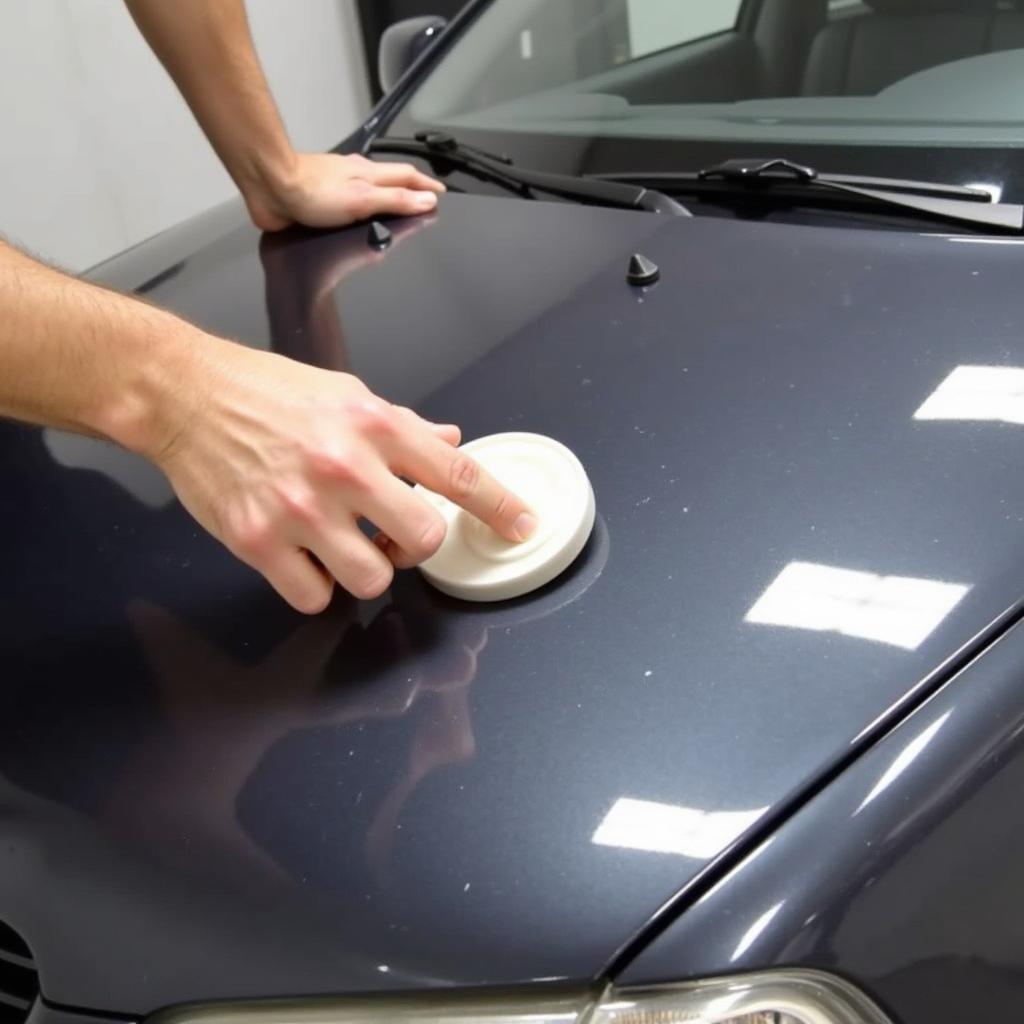Rust bubbling under your car’s paint is a common problem, but it’s one that needs addressing quickly to prevent further damage. This unsightly issue not only affects your car’s aesthetics but also compromises the metal underneath, potentially leading to costly repairs down the line. This guide will provide a step-by-step approach on how to fix rust bubbling paint on your car, covering everything from the initial assessment to the final touch-ups.
Similar to fix rush on car, addressing rust bubbling paint requires a methodical approach. First, you need to identify the extent of the rust damage. Is it a small, localized bubble or a more widespread issue? This will determine the tools and materials you’ll need. For small areas, sandpaper, primer, and touch-up paint might suffice. However, larger areas might require a rust converter, body filler, and potentially even a professional’s touch.
Assessing the Rust Damage
Before you start, thoroughly clean the affected area with soap and water, then dry it completely. This allows for a proper assessment of the damage. Gently poke the bubble with a screwdriver. If it flakes off easily, revealing more rust underneath, you’re dealing with more than just surface rust. This indicates that the rust has penetrated deeper into the metal.
Gathering Your Supplies
Having the right tools makes the job easier and yields better results. For minor rust bubbling, you’ll need: sandpaper (various grits), masking tape, a rust converter, primer, touch-up paint that matches your car’s color, clear coat, and rubbing compound. For more extensive damage, you may also need body filler, a sanding block, and possibly a power sander.
Removing the Rust
Use sandpaper to remove the bubbling paint and expose the bare metal. Start with a coarser grit (e.g., 80-grit) and gradually move to a finer grit (e.g., 220-grit) to create a smooth surface. Remember to feather the edges of the sanded area to blend it seamlessly with the surrounding paint. This is a crucial step for easy way to fix rust on a car and ensures a professional-looking finish.
Applying Rust Converter
Once the bare metal is exposed, apply a rust converter to the affected area. This chemical solution transforms the rust into a stable, paintable surface. Follow the manufacturer’s instructions carefully regarding application and drying time. This step is vital for preventing future rust formation.
Filling and Priming
If there are any significant pits or imperfections in the metal after removing the rust, apply body filler to create a smooth, even surface. After the filler dries, sand it down until it’s flush with the surrounding area. Then, apply a thin, even coat of primer to the entire repaired area. This helps the paint adhere properly and provides an additional layer of protection against rust.
Painting and Clear Coating
Once the primer is dry, apply several thin coats of touch-up paint, allowing each coat to dry before applying the next. This will prevent runs and ensure an even color. Finally, apply a few coats of clear coat to protect the paint and give it a glossy finish.
Like how to fix bumps on car, the process of fixing rust bubbles often involves painting and clear coating. This is essential for restoring the car’s appearance and protecting the repaired area.
Final Touches
After the clear coat has dried, use a rubbing compound to blend the repaired area seamlessly with the surrounding paint. This will remove any imperfections and give your car a professional-looking finish. Remember to wax the entire area afterward to protect the paint and maintain its shine. For situations where the rust has affected the car’s undercarriage, you may need to refer to resources like how to fix rusted bottom of car.
 Final Touch-Ups on Car Paint
Final Touch-Ups on Car Paint
“Addressing rust bubbling quickly is crucial,” says automotive expert, John Miller, ASE Certified Master Technician. “Ignoring it allows the rust to spread, leading to more extensive and costly repairs later on.”
“Preventing rust is always better than fixing it,” adds Sarah Johnson, automotive engineer. “Regularly washing and waxing your car, especially in areas exposed to road salt, can help protect the paint and prevent rust formation.”
In conclusion, fixing rust bubbling paint on your car is a manageable DIY project if addressed early. By following these steps and using the right materials, you can effectively restore your car’s appearance and prevent further damage. If you’re unsure about any of these steps, or if the rust damage is extensive, consulting a professional is always recommended. For personalized assistance or further guidance, feel free to connect with AutoTipPro at +1 (641) 206-8880 or visit our office at 500 N St Mary’s St, San Antonio, TX 78205, United States.
 Completed Rust Repair on Car
Completed Rust Repair on Car
Similar to how to fix car scrape down to metal, neglecting rust can lead to significant damage. Don’t wait until it becomes a major problem.





Leave a Reply